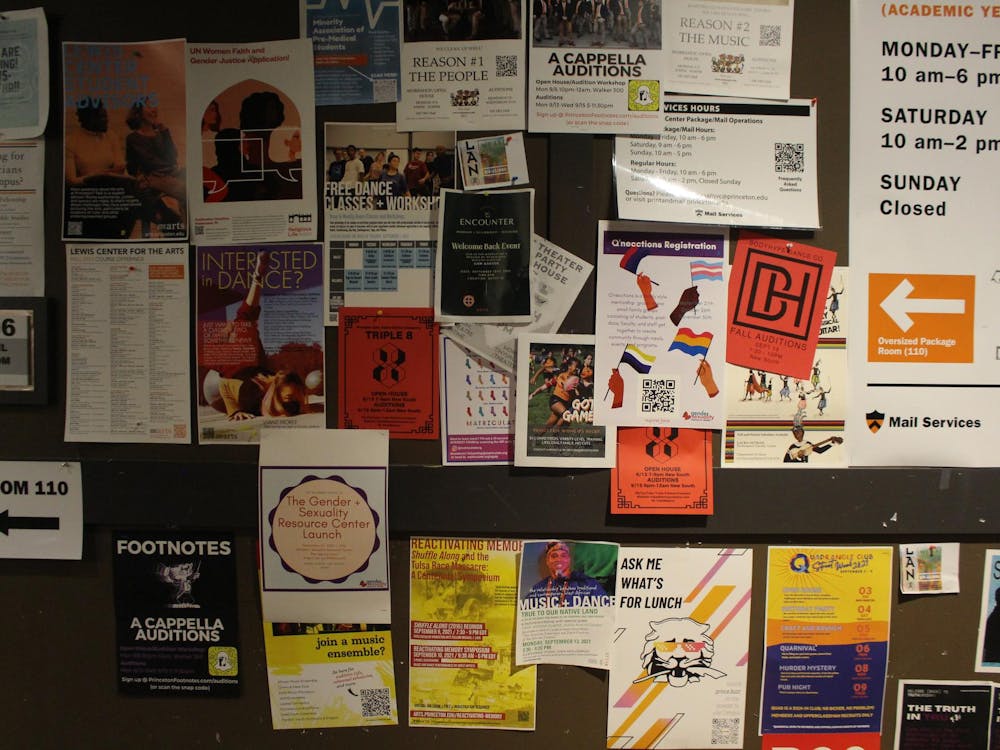There were warning signs that midterms and their accompanying stress were coming. One of the first indicators in my class is that people start to miss assignment deadlines. The reasons vary, but old standbys like "I forgot" and variants of "the dog ate my homework" are popular: "My computer crashed, and I lost the whole problem set." There seems to be a strong correlation between disk failures and midterms; maybe disks stress out too, in a display of empathy with their owners.
People start to fall ill because there are always evil bugs going around, and living in close quarters is a great way to exchange them. I've been auditing SOC 250: The Western Way of War, a fascinating course taught by professor Miguel Centeno. Some days the sound of 100 students coughing drowns him out entirely, and I wonder why I'm voluntarily sitting in the middle of a germ warfare zone. Stress must weaken the immune system since it's for sure that the number of requests for extensions and/or mercy because "I've been sick" starts to rise in the week or two before midterms.
And then there's attendance at lectures. My deadest day of the year is the Wednesday before Thanksgiving, of course, but the second lecture of midterm week is not far behind. Everyone is desperately cramming for exams or trying to catch up with papers due or maybe just hoping for a few hours of sleep. It's more efficient and certainly far more comfortable to sleep in one's room than in lecture, so it's no surprise that half the class fails to show.
I do expect close to a full house today, however, since that's when I hand out the midterm exam. People are faced with an unpleasant choice: drag their tired and sick bodies to class to pick it up, or make a special trip to beyond the edge of the known universe (my office in the Computer Science Building). Most decide that it's less effort to come to class because it's closer and there's still a chance for a decent nap at the back of the room.
The perpetual construction on campus also added a bit of stress all around. I was originally supposed to teach in Peyton 145, but some schedule slipped (the dog ate the blueprints?), and the room wasn't ready in September. This left me in a bit of a bind. Officialdom offered a room with 98 seats (I counted them); a bit of quantitative reasoning suggested that this would probably not hold the 130 students and 10 community auditors who had signed up. Furthermore, the web page that gives information about classroom sizes was broken and stayed broken until weeks after the dust had settled, so there was no way to explore alternatives short of wandering the campus.
After some tense last-minute negotiations, I wound up in McDonnell A02, a huge room that seats more than 300. The big drawback of a huge room is that students sit way in the back, where it's better for sleep and socializing. The instructor can't see them in the gloom; there's no personal contact and little chance to get to know anyone past the first few rows. In the first lecture I tried to get people to move forward but was pretty much ignored, and over time more and more students wound up in the very back.
Last week we moved back to Peyton. We just fit, and enough people skip each lecture that the regulars have room to spread out. Life is mostly better: I can see everyone, though the lighting is still poor, and the controls are terribly awkward. I can use overheads instead of PowerPoint, which is liberating. There's a full-size table where I can spread out my junk. Best of all, I'm getting to know some of the back-row population. In the long run, I hope that's good for them; it certainly is for me. In the short run, though, loss of anonymity and interference with regular sleep must surely add to the stress of midterm week. Hang in, everyone - with luck, you'll live through it.
Brian Kernighan GS '69 is a professor in the Department of Computer Science and is a Forbes faculty adviser. He can be reached at bwk@princeton.edu.







